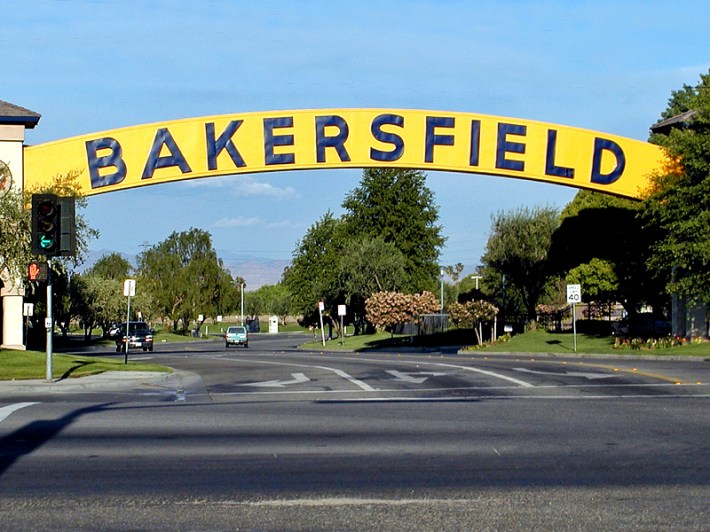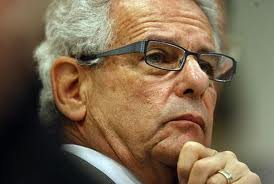
On Thursday, the California High Speed Rail Authority accepted the resignation of Ogilvy Public Relations. The PR firm was about to get axed over accusations that it billed excessively while doing little to counter a tide of anti-rail propaganda.
Meanwhile, on Wednesday, at the Rosemead Community Recreation Center, east of Los Angeles, the Authority displayed maps and renderings of the rail system it's designing to link California's major cities. Up and down the state, in fact, the Authority is holding regular outreach meetings as it draws up detailed blueprints, including a planned initial segment from Bakersfield to north of Fresno, through the state's agricultural Central Valley. “We hope to start construction in the fall of 2012,” said Project Manager Maj. Gen. Hans Van Winkle at a high-speed rail conference in downtown Los Angeles. So in theory, everything's on schedule and there's $6.3 billion in state bonds and federal funds ready to go.
The Ogilvy firing, however, was just the latest indication of the vicious brawl going on between HSR opponents and supporters nationally and in Sacramento. With Florida's decision to abandon its project, California is now the only state with a dedicated HSR system in advanced planning. That's put California in the cross-hairs of anti-rail politicians and petroleum-and-aviation-industry-backed groups such as the Reason Foundation.
The battled heated up May 10, when California's Legislative Analyst Office (LAO) came out with a report attacking the decision to build the first leg in the Central Valley. Engineers prefer this long, straight section because it minimizes construction challenges. Nevertheless, the report set off a flurry of anti-rail editorials in papers ranging from the Sacramento Bee to the Washington Post and The Wall Street Journal. Many echoed the Reason Foundation's statements that the Central California segment will be a “train to nowhere.”
“This initial money, if we spent it instead in Southern California...we could use it for existing commuter rail and high-speed rail,” said Southern California State Senator Alan Lowenthal.
In 2008, voters in California approved Proposition 1A, which authorized the state to issue $10 billion in bonds to begin funding a dedicated, 220-mph high-speed line from Los Angeles to San Francisco. However, it stipulated the dollars can't be spent unless they're matched — in this case by the Feds.
Roelof van Ark, Chief Executive Officer of the California HSR project, requested that the Federal Railroad Administration consider “flexibility” with funds slotted for California. But it mandated the Central Valley segment because it's the most shovel ready. And Roy Kienitz, Under Secretary for Policy, rejected changing that stipulation.

The LAO report had other criticisms, including a claim that the cost of the project was underestimated at $43 million and is more likely to run about $67 billion. But it's the tug-of-war between the Central Valley and the ends of the state that threatens the project as politicians vie for control over the money pot.
The Republican Mayor of Fresno, Ashley Swearengin, is a staunch supporter of HSR and the decision to start in the Central Valley. She talks about how important the project will be for giving her constituents a way to reach Los Angeles and the Bay Area. Southern California's Alan Lowenthal, however, introduced Senate Bill 517 to fix “deficiencies” — by, among other things, firing the entire HSR Authority Board. “I love the project — I just don't feel we have the right people in place,” he said, “or that we're getting accurate information.” High-speed rail supporters say he just wants a board that will reverse the decision to start in the Central Valley.
“He's constantly harping and nitpicking every detail,” said Daniel Krause, executive director of Californians for High-Speed Rail, a volunteer group trying to counter the anti-HSR wave. “It's not that there shouldn't be critiques, but he bases all his arguments on figures from rail skeptics. He's seriously endangering the project.”
Lowenthal concedes that without a dedicated revenue stream set up to fund construction of the entire system he can't support starting in the Central Valley, even if the alternative is the project's death.
Then there's Assembly Bill 145 from another Central Valley politician, Stockton Assemblywoman Cathleen Galgiani. It would put the entire project under a new agency called the Department of High Speed Trains. Advocates see it as a way to give the project continuity and to protect it from Lowenthal and shifting political winds. Galgiani herself is more conciliatory. “I see the two bills as complementary,” she said. Her main beef is with the LAO, which she accuses of playing “Monday morning quarterback” by launching its critique so late in the game.
Either way, Galgiani wants 517 amended to include a grandfather clause that would allow current board members to complete their terms. That keeps the board intact until shovels start turning. Without that clause, the project could end up with an openly hostile board, predict HSR's boosters. They could change the decision to start in the Central Valley, thereby sabotaging Federal matching funds and halting the project. In that case, California follows Florida and the project dies. “Then you won't see true HSR in the U.S. for a generation,” said Krause.





